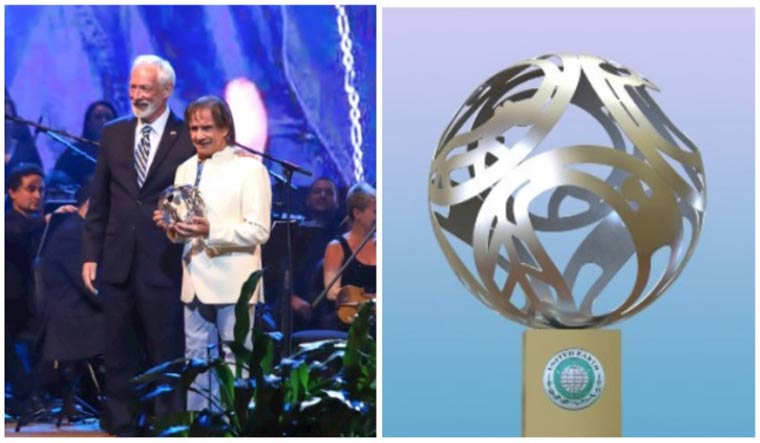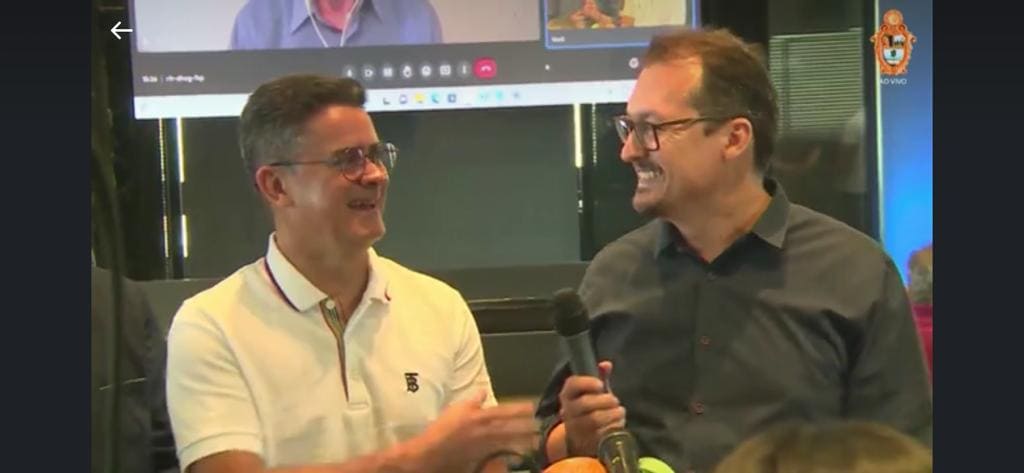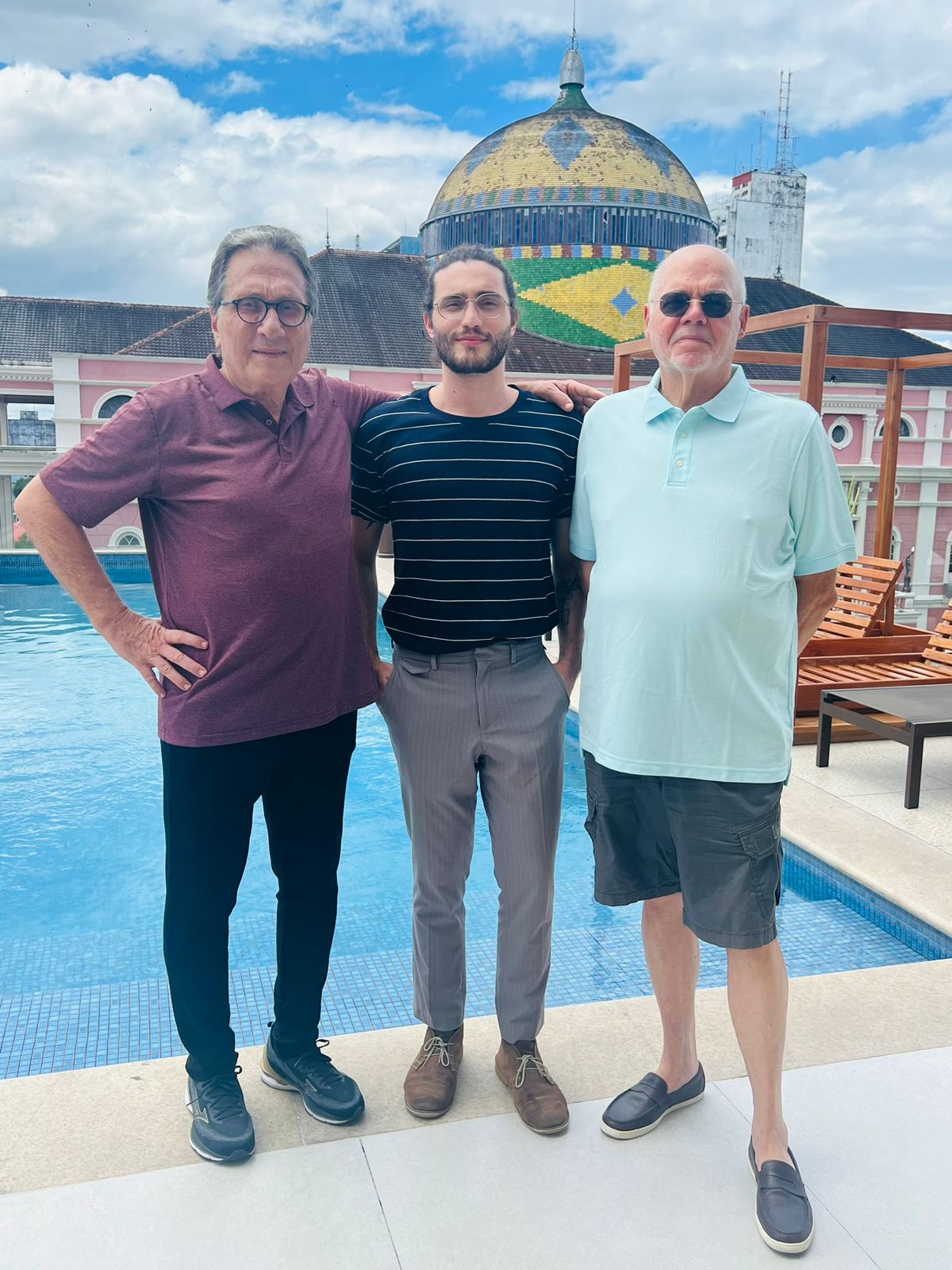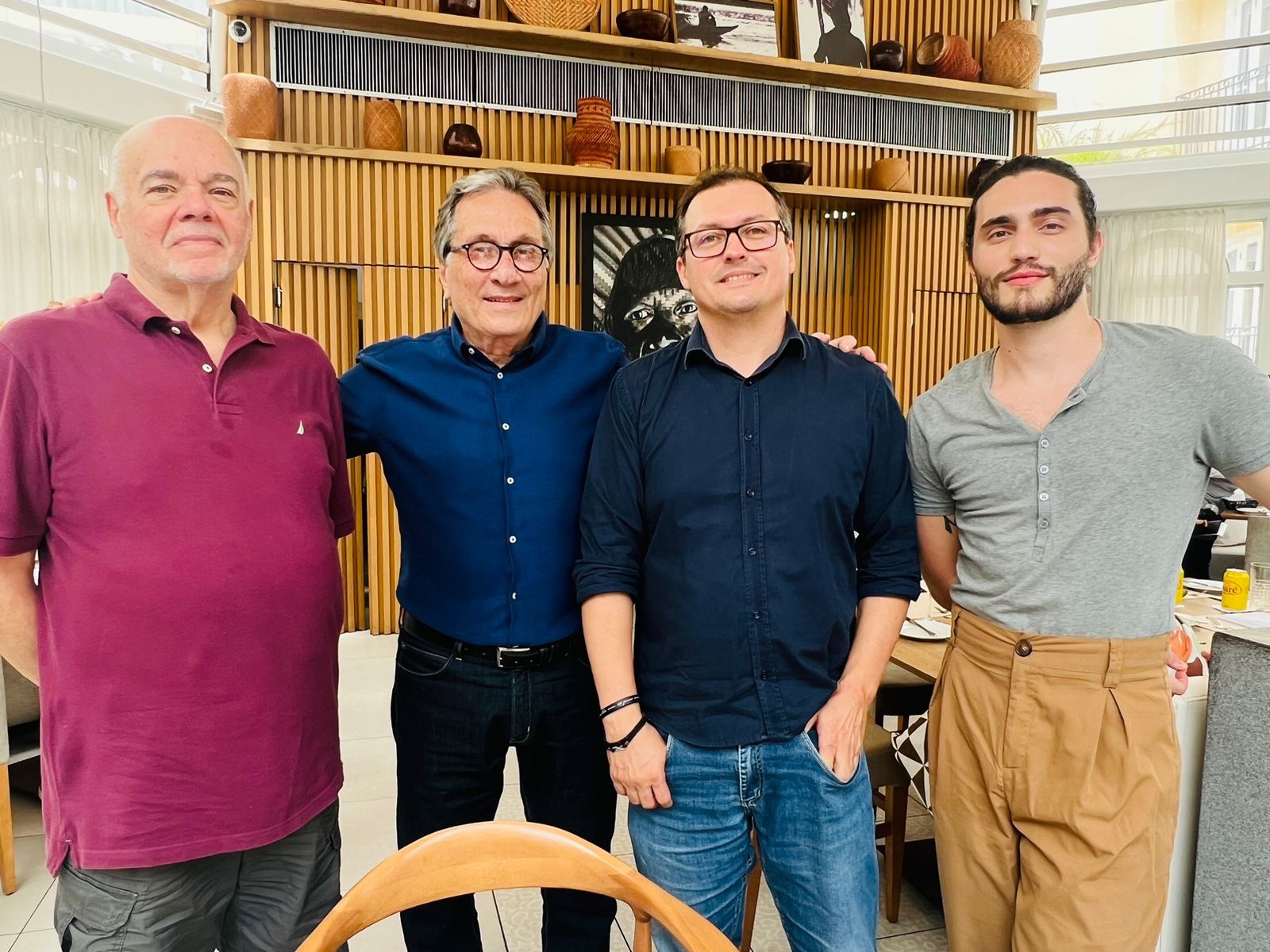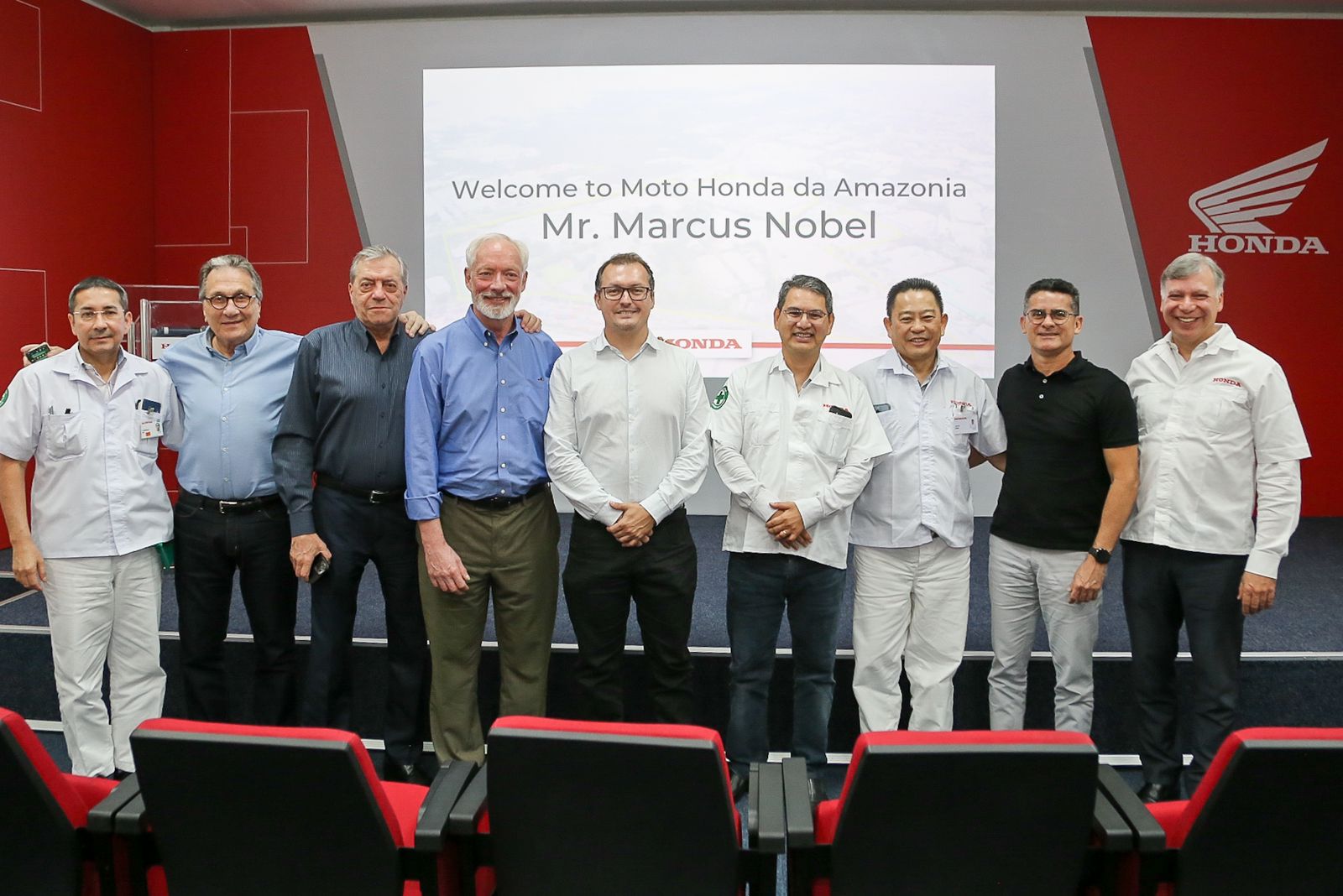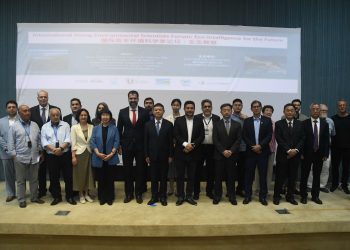United Earth Amazonian Award
Alfred Nobel did not have any direct descendants. The man who created the most prestigious award in the world and dedicated his legacy to recognising those who make outstanding achievements for the betterment of humanity, never married and did not have any children. His closest family descendants were always his nephews.
One of them lives in our time – Marcus Nobel.
He is now catalysing the environmental movement with a new iteration of a Nobel-inspired Amazonian Award, boldly presented to the world from the epicentre of the world’s climate, Manaus, Brazil, along the banks of the mighty river in the capital of the state of Amazonia, a.k.a. The Lungs of the World.
It is a whole new level of ecological laurel—the United Earth Amazonian Award, a Nobel Memorial Prize.
Deep in Brazilian Amazonia, this award aims to shine a light on Earth’s largest rainforest, and those tirelessly working to protect it, honouring the memory and inspiration of Alfred Nobel.
It has been a long journey for Marcus to this point. He was a celebrity before he understood it, just as the world was in climate trouble before it knew it. Heir to a noble legacy, he grew up an immigrant in the United States, his family’s origins stretching back to Sweden from where his ancestral name and influence loom large upon the world.
Just as Marcus was discovering the world’s gaze upon him, the world itself was unassumingly slipping into the tempests of climate turmoil, its troubles deepening in silence.
In the ’60s and ’70s, he was just Marcus Nobel in Wisconsin. Only a few inquired about his famous last name. Back then, his father Claus Nobel, a smart pitchman and entrepreneur was living the American dream, penning a story of his own, venturing through the labyrinth of a successful carwash empire.
Something deep resonated with the Nobels of Wisconsin, however, whispering to Claus of responsibility and a duty to shape the world for the better. The bright supernova in their lineage was the backdrop for Marcus’s journey as well. Alfred Nobel’s spirit became his moral guidepost.
Speaking exclusively to THE WEEK, Marcus Nobel recalls how as a child and young man time and again, whispers would find their way to his ears, labelling him a “celebrity”. Something that he did not quite begin to understand until the day when Martin Luther King won the Nobel Peace Prize and his grade school class teacher invited to comment, or when his university newspaper suddenly wanted to interview him.
His connection to the honoured lineage made of him something of an enigma to friends and classmates. He was their flesh-and-blood connection to the the very architect of the Nobel Prizes for human achievement.
Recognising the good fortune inherent in their legacy, Claus Nobel began to sow the seeds of change, embarking on a mission that would resonate across time. He founded United Earth as a non-profit, NGO, in 1974 with the aim of “uniting the people of Earth in building a collective, sustainable future”.
With the tutelage, sponsorship, and underwriting procured by renowned environmental champion and diplomat Dr Noel Brown of Jamaica, the United Earth Prize was born in the annals of the United Nations; conceived in 1991, it fused the ideals and responsible ethic of Alfred Nobel with the urgency of environmental stewardship.
Brown was the director of the United Nations Environment Programme (UNEP), a man instrumental in promoting sustainable development and environmental protection. He played a key role in organising the Earth Summit in Rio de Janeiro in 1992, yielding a comprehensive plan of action to promote sustainable development worldwide. He also established the Intergovernmental Panel on Climate Change (IPCC), responsible for assessing the science related to climate change.
The first United Earth Prize event was held that year in the General Assembly Hall of the United Nations in New York, with storied journalist Bill Moyers as emcee and country singer-songwriter and environmental activist John Denver.
The ’92 award ceremony was held in the grand space of New York City’s famed Bradley Center. Echoes of applause still ring in Marcus’s ears; as does the memory of the legendary Maestro Quincy Jones as emcee.
Marcus was there by his father’s side, immersed in the earliest iterations, building the lowest rungs of the the United Earth Amazonian Award structure that blossoms in 2023.
Along the way, Marcus met the Dalai Lama, CNN Founder Ted Turner and many of the people who run the world.
It has been a formidable journey, but it was no easy task.
In parallel to his life, marched the planet’s gathering environmental crisis. In the early 1990s climate change was still a peripheral concern for people and governments, barely lurking at the edges of the world’s collective consciousness, not fully awakened to the magnitude of the threat.
But, accelerating CO2 levels, melting glaciers and dire scientific projections made louder the warnings of coming catastrophes.
A sense of urgency mounted in the 2000s as Green political parties swelled across Europe. Preserving the crucial rainforest of the Amazon and other wilderness areas went from radical causes to ethical imperatives.
With these dual revelations—of his own Nobel legacy and the quickening climate disaster—Marcus grew convinced that Alfred Nobel’s model was the vehicle the times needed to raise consciousness and compel the people of the Earth to unite in order to save it.
Alfred Nobel, the inventor of dynamite who saw its power of destruction and then imagined he could impact the world by leaving a positive and enduring legacy, once said, “If I have a thousand ideas and only one turns out to be good, I am satisfied.” Marcus Nobel has tried a thousand times to use United Earth’s voice as an instrument of change, to awaken the world’s ecological conscience, before the Amazonian Award was conceived.
We all understand, rationally anyway, that the damage to the environment can be slowed down, stopped maybe, that the process does not have to move only in one direction, that it is possible to make more of what has been lost, and that doing it secures the future of our planet.
But Marcus Nobel knows the power of incentive and recognition, of celebrating the human spirit and its highest potential, especially when the future of our home planet is at stake.
He sees the United Earth Amazonian Award as a beacon of hope, encouraging innovative approaches and sustainable practices that can be replicated worldwide. By honouring those who have shown exceptional dedication to the preservation of the Earth’s resources, the prize is out to inspire a new wave of environmental consciousness and to build solidarity in the planet, transcending geographic and cultural boundaries.
Joining forces with the celebrated Brazilian-born former VP of EMI Music Latin America and Senior VP of Capitol Latin, Sergio Lopes, Nobel has added a dash of Hollywood, showbiz, and glitter in a stately recognition that incorporates the power and the beauty of music in a role to move people and to inspire with work at the heart of what is valuable to humanity and human existence.
Lopes, a veteran of Sony Music and Oglivy Advertising is a showbiz powerhouse with a global perspective. And that is just the direction Marcus Nobel wants for the prize. With their joint vision. Manaus, the city that was once graced by the voice of the great tenor Caruso becomes the setting for the global environmental prize, the United Earth Amazonian Award.
Picture Caruso’s triumphant notes, hear his majestic voice echoing through the very rainforest that Manaus cradles, with the strains of Verdi’s “Ernani”.
“We are evolving as we look at the Amazon,” says Marcus Nobel. “There are many, many issues such as illegal goldmining, deforestation, the treatment of indigenous peoples, those are very difficult issues which cannot be easily solved and there are groups working on that,” he said. “What we are doing that is absolutely different, we are raising consciousness and, creating community.”
Using music and adjunct festivals, says Marcus Nobel, “we want to be a constant pressure for the positive, focusing on global planetary issues”. And so, he has merged a unique platform of environmentalism, social justice and moral urgency in a battle for the life of the planet.
The United Earth Amazonian Award is explicit that it is based on the same values as the Nobel Peace Prize and that is aligned with the Nobel family’s mission to “unite the people and nations of the earth in building our collective and sustainable future”.
Marcus Nobel explains that the award takes the form of a series of prizes to elevate exceptional contributions in the various realms of environmentalism.
The transition from thought to action, however, was not immediate. It has taken nearly 50 years since the founding of United Earth and 32 years since the first prize. Throughout, Marcus’s path was illuminated by the inspiration of Alfred Nobel.
The new incarnation as the United Earth Amazonian Award is thus a tale of personal transformation as it is of the evolution of the prize into a global marker, a narrative where Alfred Nobel’s legacy has redirected the course of Marcus Nobel’s life, and he and the prize emerge as modern-day stewards of the planet through his own passions and the Nobel lineage.
The Award
Laureates receive a symbolic masterpiece by famed Brazilian sculptor Darlan Rosa made from recycled stainless steel that consists of a sphere with six sides, an extraordinary sculpture representing the Earth itself as a symbol of our planet’s beauty and fragility. Divided into six sides connected by the figure of a man with outstretched hands it evokes the interconnectedness of humanity with the natural world.
A symbol for Manaus
Like the statue of Helios that stood at the harbour of Rhodes, beaconing the world to environmental consciousness like the Statue of Liberty beckoned immigrants, a 5-metres in diameter statue of the award will stand on the banks of Manaus’s Rio Negro, one of the major tributaries to the Amazon River with breathtaking views of the river and the Amazon rainforest.
The six sides of the sphere, internally illuminated by solar panels, represent the interconnectedness of man with the flora, fauna, water, air and natural resources. The man’s outstretched arms embody humanity reaching out and striving for a better world.
Because of its imposing size, the sculpture will serve as a powerful symbol of Manaus as the central point of the UE Amazonian Award, celebrating the values of environmental stewardship, cooperation, and global unity.
“With the visibility, we want to show the Amazon from the inside out, from those who know how to preserve it, from those who are the greatest preservers of the largest tropical forest in the world,” said Manaus Mayor David Almeida about the project.
“And that is what we want to do,” added Almeida. “to take a front seat in a discussion in which we are protagonists so that we can say to the world, ‘This is where the greatest biodiversity is, this is where we have to preserve. And we have a lot to show the world’.”
The expectation is that with global broadcasts of the Award ceremonies, the statue will become a globally recognised icon of Manaus and a united Earth protected by its people.
A vision unveiled
Visions of a future where lush rainforests thrive untouched, where oceans are pristine havens, and where every species finds sanctuary may seem unattainable today, but United Earth sees the Amazonian Award as a way to inspire and recognise not just the champions of conservation, but those who aspire to be the guardians of a world where those visions are not just a dream but a reachable gift to leave for generations to come.
A legacy for generations
The Award’s selection process follows the methodology of the Nobel Peace Prize, says United Earth. The laureates are not mere recipients; they are catalysts. Their work is chosen to reverberate, inspiring others, igniting a passion for change.
The Nobel connection
While the Amazonian Award is not part of the Nobel constellation of prizes awarded by the Nobel Foundation. It is of note that although the Nobel Prize in Economics was originally formed outside of the foundation’s structure by Sweden’s Central Bank as the Nobel Memorial Prize in Economic Sciences, it was eventually embraced by the foundation, was integrated into the Nobel family, and is now awarded alongside the original Nobel Prizes.
Seeing the Amazonian Award so recognised in time is Marcus Nobel’s grand vision for the Earth because it will mean that the world has collectively embraced the imperative of environmental stewardship. And that his famous ancestor will be smiling.
The 2024 Amazonian Award Ceremony will be held on April 2 at the famed Manaus Opera House celebrating the collective commitment to safeguarding the planet—a fitting tribute to the legacy of Alfred Nobel.
==========================================================================================
Prêmio Amazônico Terra Unida: Levando adiante o legado Nobel
Alfred Nobel não teve descendentes diretos. O homem que criou o prêmio mais prestigioso do mundo e dedicou seu legado ao reconhecimento daqueles que alcançam feitos notáveis para o benefício da humanidade nunca se casou e não teve filhos. Seus parentes mais próximos foram sempre seus sobrinhos.
Um deles vive em nosso tempo – Marcus Nobel.
Ele está catalisando o movimento ambiental com uma nova iteração de um Prêmio Amazônico inspirado no Nobel, apresentado corajosamente ao mundo a partir do epicentro do clima mundial, Manaus, Brasil, às margens do poderoso rio na capital do estado da Amazônia, também conhecida como os Pulmões do Mundo.
É um nível completamente novo de louro ecológico – o Prêmio Amazônico Terra Unida, um Prêmio Memorial Nobel.
No coração da Amazônia brasileira, este prêmio visa lançar luz sobre a maior floresta tropical da Terra e aqueles que trabalham incansavelmente para protegê-la, honrando a memória e a inspiração de Alfred Nobel.
Foi uma longa jornada para Marcus chegar a este ponto. Ele já era uma celebridade antes de entendê-lo, assim como o mundo estava em apuros climáticos antes de percebê-lo. Herdeiro de um legado nobre, ele cresceu como imigrante nos Estados Unidos, com raízes familiares que remontam à Suécia, de onde seu nome ancestral e influência têm um grande impacto no mundo.
Assim como Marcus estava descobrindo o olhar do mundo sobre ele, o próprio mundo estava discretamente mergulhando nas tempestades da turbulência climática, com seus problemas se agravando em silêncio.
Nas décadas de 60 e 70, ele era apenas Marcus Nobel em Wisconsin. Apenas alguns perguntavam sobre seu sobrenome famoso. Naquela época, seu pai Claus Nobel, um homem de negócios inteligente e empreendedor, estava vivendo o sonho americano, escrevendo sua própria história, aventurando-se pelo labirinto de um império de lava-rápidos de sucesso.
No entanto, algo profundamente ressoava com os Nobels de Wisconsin, sussurrando a Claus a responsabilidade e o dever de moldar o mundo para melhor. A supernova brilhante em sua linhagem era o pano de fundo da jornada de Marcus. O espírito de Alfred Nobel tornou-se seu ponto de referência moral.
Em uma entrevista exclusiva para a revista THE WEEK, Marcus Nobel recorda como, quando criança e jovem, sussurros chegavam repetidamente aos seus ouvidos, rotulando-o de “celebridade”. Algo que ele não começou a entender totalmente até o dia em que Martin Luther King ganhou o Prêmio Nobel da Paz e seu professor da escola primária o convidou a comentar, ou quando o jornal da universidade de repente quis entrevistá-lo.
Sua conexão com a linhagem honrada o transformou em algo enigmático para amigos e colegas de classe. Ele era a conexão de carne e osso deles com o próprio arquiteto dos Prêmios Nobel para realizações humanas.
Reconhecendo a boa sorte inerente em seu legado, Claus Nobel começou a semear as sementes da mudança, embarcando em uma missão que ressoaria ao longo do tempo. Ele fundou a Terra Unida como uma organização não governamental e sem fins lucrativos em 1974, com o objetivo de “unir as pessoas da Terra na construção de um futuro coletivo e sustentável”.
Com a orientação, patrocínio e financiamento obtidos pelo renomado campeão ambiental e diplomata Dr. Noel Brown, da Jamaica, o Prêmio Terra Unida nasceu nos anais das Nações Unidas; concebido em 1991, ele fundiu os ideais e a ética responsável de Alfred Nobel com a urgência do cuidado ambiental.
Brown era o diretor do Programa das Nações Unidas para o Meio Ambiente (PNUMA), um homem fundamental na promoção do desenvolvimento sustentável e da proteção ambiental. Ele desempenhou um papel importante na organização da Cúpula da Terra no Rio de Janeiro em 1992, resultando em um plano abrangente de ação para promover o desenvolvimento sustentável em todo o mundo. Ele também estabeleceu o Painel Intergovernamental sobre Mudanças Climáticas (IPCC), responsável por avaliar a ciência relacionada às mudanças climáticas.
O primeiro evento do Prêmio Terra Unida foi realizado naquele ano na Assembleia Geral das Nações Unidas em Nova York, com o famoso jornalista Bill Moyers como mestre de cerimônias e o cantor e ativista ambiental John Denver.
A cerimônia de premiação de 1992 ocorreu no grandioso espaço do Bradley Center de Nova York. O eco dos aplausos ainda ecoa nos ouvidos de Marcus; assim como a memória do lendário maestro Quincy Jones como mestre de cerimônias.
Marcus estava lá ao lado de seu pai, imerso nas primeiras iterações, construindo os degraus mais baixos da estrutura do Prêmio Amazônico Terra Unida que floresce em 2023.
Ao longo do caminho, Marcus conheceu o Dalai Lama, o fundador da CNN, Ted Turner, e muitas das pessoas que governam o mundo.
Foi uma jornada formidável, mas não foi uma tarefa fácil.
Paralelamente à sua vida, marchava a crise ambiental crescente do planeta. No início dos anos 1990, as mudanças climáticas ainda eram uma preocupação periférica para as pessoas e governos, mal espreitando nas bordas da consciência coletiva do mundo, não totalmente despertas para a magnitude da ameaça.
Mas, com o aumento dos níveis de CO2, o derretimento das geleiras e as sombrias projeções científicas, os alertas sobre as futuras catástrofes se tornaram mais altos.
Um senso de urgência cresceu nos anos 2000, à medida que os partidos políticos verdes se expandiram pela Europa. Preservar a crucial floresta tropical da Amazônia e outras áreas selvagens deixou de ser uma causa radical para se tornar um imperativo ético.
Com essas duas revelações – de seu próprio legado Nobel e da rápida crise climática – Marcus se convenceu de que o modelo de Alfred Nobel era o veículo que os tempos precisavam para elevar a consciência e compelir as pessoas da Terra a se unirem para salvá-la.
Alfred Nobel, o inventor da dinamite que viu seu poder de destruição e imaginou que poderia impactar o mundo deixando um legado positivo e duradouro, disse uma vez: “Se eu tiver mil ideias e apenas uma se mostrar boa, estou satisfeito.” Marcus Nobel tentou mil vezes usar a voz da Terra Unida como um instrumento de mudança, para despertar a consciência ecológica do mundo, antes que o Prêmio Amazônico fosse concebido.
Todos nós entendemos, pelo menos racionalmente, que o dano ao meio ambiente pode ser desacelerado, talvez interrompido, que o processo não precisa se mover apenas em uma direção, que é possível recuperar o que foi perdido e que fazer isso assegura o futuro de nosso planeta.
Mas Marcus Nobel conhece o poder do incentivo e do reconhecimento, de celebrar o espírito humano e seu mais alto potencial, especialmente quando o futuro de nosso planeta está em jogo.
Ele vê o Prêmio Amazônico Terra Unida como um farol de esperança, incentivando abordagens inovadoras e práticas sustentáveis que podem ser replicadas em todo o mundo. Ao honrar aqueles que mostraram dedicação excepcional à preservação dos recursos da Terra, o prêmio visa inspirar uma nova onda de consciência ambiental e construir solidariedade no planeta, transcendendo fronteiras geográficas e culturais.
Unindo forças com o célebre brasileiro Sergio Lopes, ex-vice-presidente da EMI Music Latin America e vice-presidente sênior da Capitol Latin, Nobel acrescentou um toque de Hollywood, entretenimento e brilho a um reconhecimento solene que incorpora o poder e a beleza da música em um papel para mover as pessoas e inspirar com trabalho no centro do que é valioso para a humanidade e a existência humana.
Lopes, um veterano da Sony Music e da Oglivy Advertising, é um gigante do entretenimento com uma perspectiva global. E essa é exatamente a direção que Marcus Nobel deseja para o prêmio. Com sua visão conjunta, Manaus, a cidade que um dia foi agraciada pela voz do grande tenor Caruso, torna-se o cenário para o prêmio ambiental global, o Prêmio Amazônico Terra Unida.
Imagine as notas triunfantes de Caruso, ouça sua majestosa voz ecoando na própria floresta tropical que Manaus acolhe, ao som de “Ernani”, de Verdi.
“Estamos evoluindo à medida que olhamos para a Amazônia”, diz Marcus Nobel. “Existem muitos, muitos problemas, como mineração ilegal de ouro, desmatamento, tratamento dos povos indígenas, que são questões muito difíceis de resolver e há grupos trabalhando nisso”, ele disse. “O que estamos fazendo de absolutamente diferente é aumentar a consciência e criar comunidade.”
Usando música e festivais correlatos, Marcus Nobel diz que “queremos ser uma pressão constante para o positivo, focando em questões planetárias globais”. E assim, ele fundiu uma plataforma única de ambientalismo, justiça social e urgência moral em uma batalha pela vida do planeta.
O Prêmio Amazônico Terra Unida é explícito ao afirmar que se baseia nos mesmos valores do Prêmio Nobel da Paz e está alinhado com a missão da família Nobel de “unir as pessoas e nações da Terra na construção de nosso futuro coletivo e sustentável”.
Marcus Nobel explica que o prêmio assume a forma de uma série de prêmios para elevar as contribuições excepcionais nos diversos domínios do ambientalismo.
No entanto, a transição do pensamento para a ação não foi imediata. Levou quase 50 anos desde a fundação da Terra Unida e 32 anos desde o primeiro prêmio. Ao longo desse tempo, o caminho de Marcus foi iluminado pela inspiração de Alfred Nobel.
A nova encarnação como o Prêmio Amazônico Terra Unida é, portanto, uma história de transformação pessoal, assim como é da evolução do prêmio para um marco global, uma narrativa em que o legado de Alfred Nobel redirecionou o curso da vida de Marcus Nobel, e ele e o prêmio emergem como guardiões dos tempos modernos do planeta, por meio de suas próprias paixões e da linhagem Nobel.
O Prêmio
Os laureados recebem uma obra-prima simbólica do renomado escultor brasileiro Darlan Rosa, feita de aço inoxidável reciclado, que consiste em uma esfera com seis lados, uma escultura extraordinária que representa a própria Terra como símbolo da beleza e fragilidade de nosso planeta. Dividida em seis lados conectados pela figura de um homem com as mãos estendidas, ela evoca a interconexão da humanidade com o mundo natural.
Um símbolo para Manaus
Assim como a estátua de Helios que ficava no porto de Rodes, chamando a atenção do mundo para a consciência ambiental, assim como a Estátua da Liberdade atraía imigrantes, uma estátua de 5 metros de diâmetro do prêmio ficará às margens do Rio Negro de Manaus, um dos principais afluentes do Rio Amazonas, com vistas deslumbrantes do rio e da floresta tropical amazônica.
Os seis lados da esfera, iluminados internamente por painéis solares, representam a interconexão do homem com a flora, fauna, água, ar e recursos naturais. Os braços estendidos do homem incorporam a humanidade se estendendo e lutando por um mundo melhor.
Devido ao seu tamanho imponente, a escultura servirá como um poderoso símbolo de Manaus como ponto central do Prêmio Amazônico Terra Unida, celebrando os valores do cuidado ambiental, cooperação e união global.
“Com a visibilidade, queremos mostrar a Amazônia de dentro para fora, daqueles que sabem como preservá-la, daqueles que são os maiores preservadores da maior floresta tropical do mundo”, disse o prefeito.
Acompanhe o Prêmio Marcus Nobel Verde
Fonte: By Milan Sime Martinic

